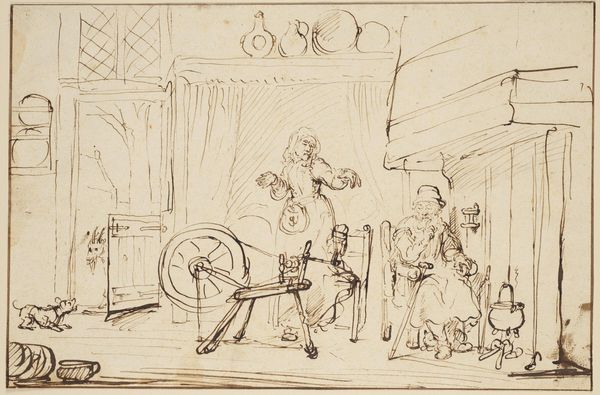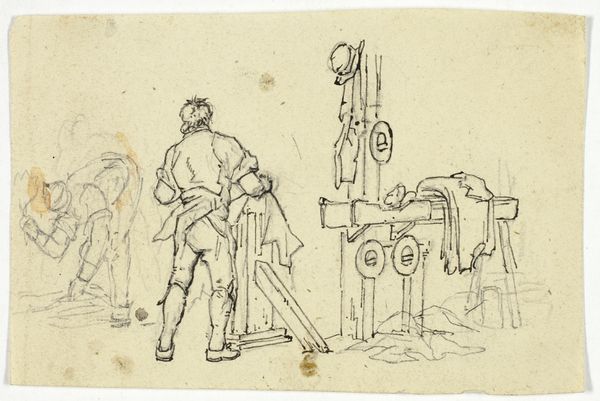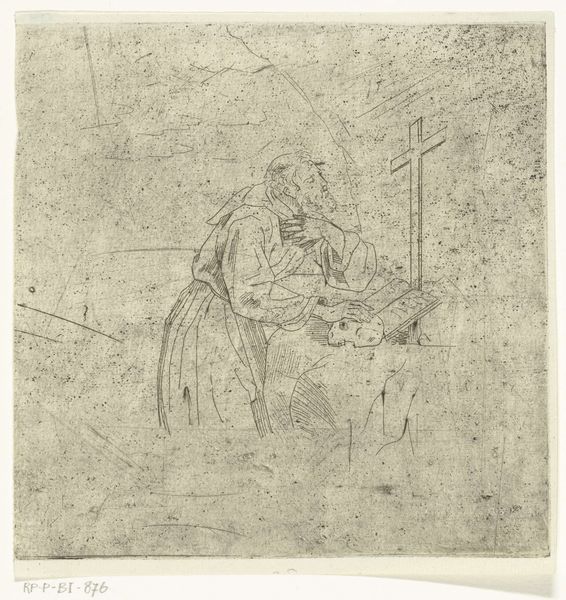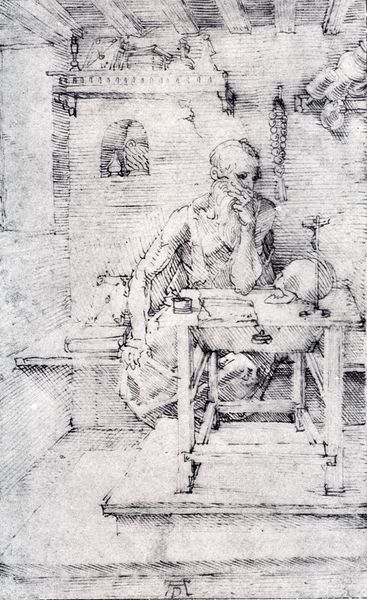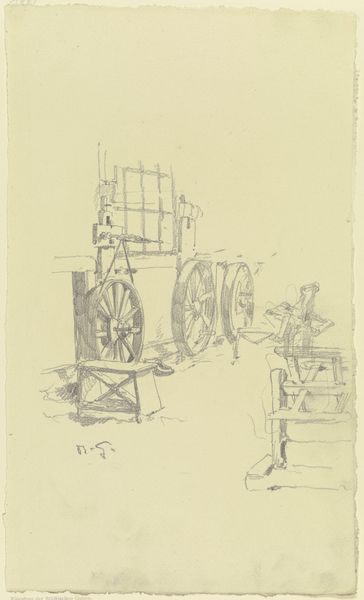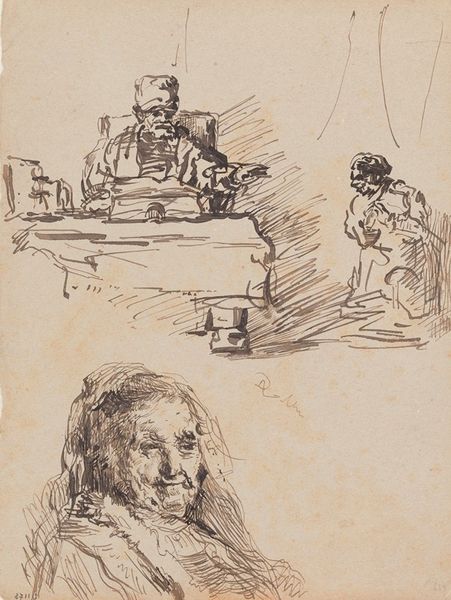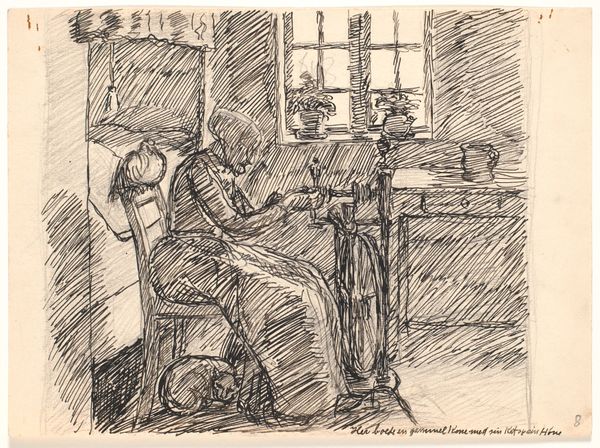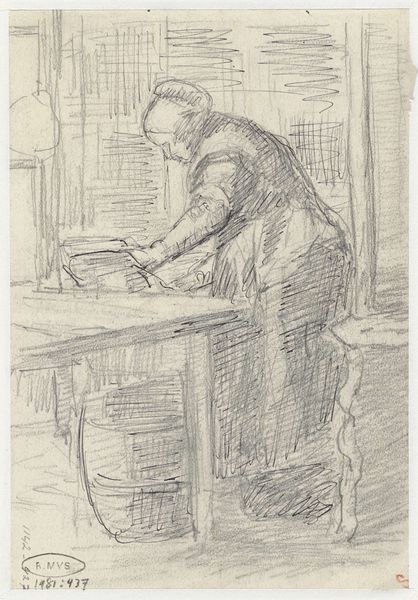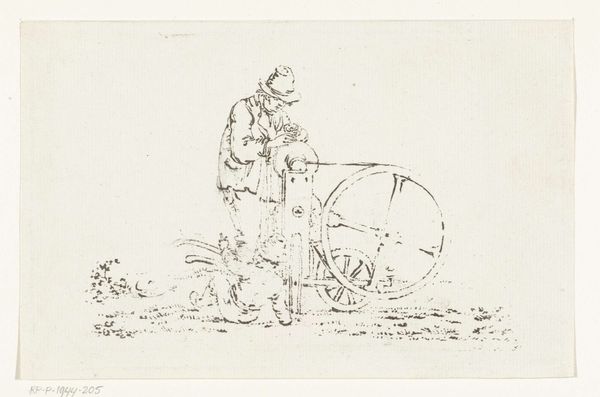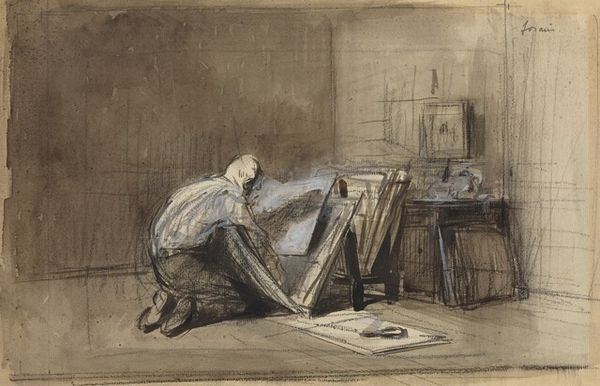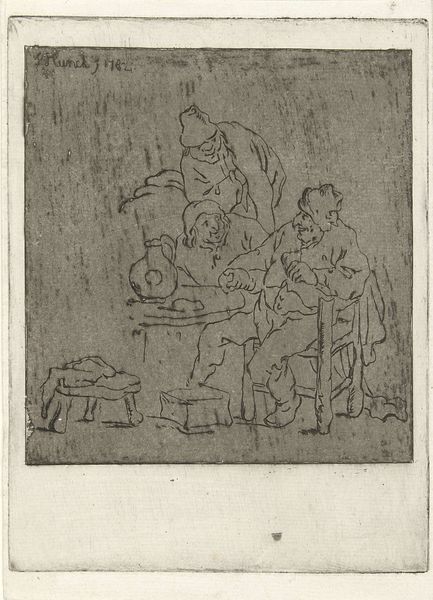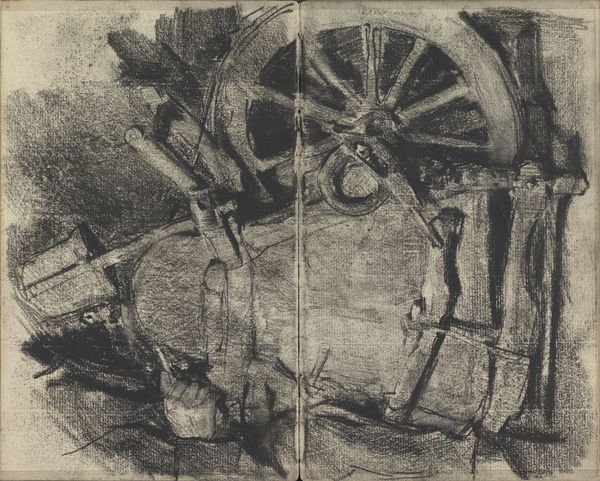
drawing, print, etching
#
portrait
#
drawing
# print
#
etching
#
figuration
#
genre-painting
#
realism
Dimensions: plate: 151 x 149 mm sheet: 362 x 278 mm
Copyright: National Gallery of Art: CC0 1.0
Editor: Here we have Robert Benney’s etching, *Untitled (Man at Sewing Machine)*, created in 1927. The cross-hatching and line work create a somber and quiet scene. What do you see in this piece? Curator: I see a powerful commentary on gender roles and labor. The very title, “Man at Sewing Machine,” immediately challenges our preconceived notions. In the 1920s, domestic tasks were heavily gendered. To see a man engaged in sewing disrupts that social order and raises questions about masculinity, work, and identity. What does it mean to depict a man in this setting at this time? Editor: So, it's less about the technique and more about what it represents? Curator: It’s both! Benney uses realism to present this scene, but it’s a *charged* realism. The banality of the everyday—a man simply operating a sewing machine—becomes revolutionary because of the historical context. Think about the societal expectations of men at the time. How does this image subvert them? Perhaps this piece engages with emergent ideas on androgyny? Editor: That's a perspective I hadn’t considered. It feels surprisingly radical now that you've mentioned the context. Curator: And think about the act of creation, itself. Benney uses etching, a medium that demands precision and care, echoing the very labor he depicts. It adds another layer to the meaning. Are we meant to consider the connections between "craft," "art," and "labor?" Editor: It's interesting how an image that appears so straightforward can spark such nuanced questions about society. Curator: Exactly. Art provides a lens through which we can interrogate social structures. Looking at the quiet and unassuming imagery we are often compelled to acknowledge larger socio-economic dialogues of its time. This seemingly simple portrait, is brimming with those larger questions. Editor: I'll never look at a "genre" scene the same way again! Thank you!
Comments
No comments
Be the first to comment and join the conversation on the ultimate creative platform.

